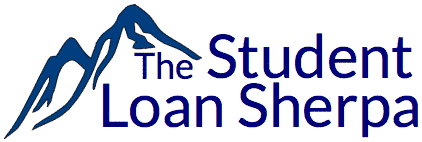Becoming a Certified Registered Nurse Anesthesiologist (CRNA) requires a significant investment of both time and money. Like many career paths in the healthcare field, the cost of education is high, but the potential for fulfilling work and high future earnings can be very rewarding.
Many CRNAs find themselves making six-figure salaries, but also often face substantial student loan debts, some even exceeding $100,000. In such high salary, high debt scenarios, crafting a smart repayment strategy is essential. Fortunately, by following a few straightforward steps, CRNAs can save thousands of dollars over the life of their loans, easing the financial burden and potentially speeding up the repayment process.
CRNA Student Debt Elimination Plans
Typically, student loan debt is resolved in one of two ways: repayment or forgiveness.
Despite the high salaries that many often CRNAs command, student loan forgiveness may still be a practical option to consider.
Before delving into program specifics, it is important to distinguish between two types of student loans. Federal student loans are offered by the government. They offer a variety of repayment plan options and forgiveness programs. In contrast, private student loans are issued by banks and other financial institutions or lenders. They tend to offer less flexibility regarding repayment and do not typically include forgiveness options.
To determine the status of your student loans, visit the Department of Education Student Loan Website. The DOE tracks all federal loans and servicers and provides a reliable resource for borrowers to identify their loan types and explore suitable repayment or forgiveness strategies.
Private Student Loans Management for CRNAs
Private student loans are generally tougher to repay than federal student loans. However, the repayment strategy for private loans is straightforward: pay off the debt in full.
The urgency of repayment will depend largely upon the interest rates of these private loans. Borrowers carrying loans with high interest rates (8-10% or more) should repay the debt as quickly as possible. High-interest student loan debt is extremely expensive, and aggressive repayment can save a significant amount of money in the long run.
Conversely, loans with lower interest rates less, particularly those under 3%, can be a much lower priority. When interest rates are this low, it might be financially smarter to make only the minimum monthly payments. This approach frees up funds that can be invested elsewhere, such as in retirement savings or toward a down payment on a home.
Refinancing is one of the most effective tools for managing private student loans. There are approximately 20 lenders that offer to pay off existing student loans and replace them with a new refinanced or consolidated loan. These lenders typically target borrowers with high incomes and good credit scores. Lenders view these kinds of borrowers as more likely to repay their debt. Accordingly, they can often secure lower interest rates and better terms for their private loans.
Lenders like SoFi and ELFI have a reputation for offering competitive rates to the general public. However, CRNAs should also investigate Laurel Road due to its focus on healthcare professionals and may offer better terms for those in the healthcare field. Each lender evaluates applicants using slightly different underwriting criteria. Thus, borrowers looking for the lowest rate possible would be wise to shop around.
The repayment strategy for federal student loans can be a little more complicated.
CRNA Federal Student Loan Repayment for Public Servants
Public Service Loan Forgiveness (PSLF) is a significant federal benefit that all CRNAs should be aware of. Those that work for the government or a 501(c)(3) employer are likely eligible. According to the National Institute of Health, approximately half the hospitals in the US are 501(c)(3) organizations.
PSLF has three basic requirements:
- Work full-time for an eligible public interest employer such as the government or a non-profit,
- Enroll in an eligible repayment plan, and;
- Make 120 qualified payments.
Anyone considering this route should make sure they understand all of the rules associated with PSLF. Also, while it is not technically required, we suggest that all borrowers pursuing PSLF submit employer certification forms yearly. Submitting the employer certification form is the best way to ensure the borrower has an eligible employer and is on an eligible repayment plan. It will also update the borrower’s progress towards the required 120 monthly payments.
There are a few challenges with Public Service Loan Forgiveness.
First, many borrowers are afraid they won’t qualify. The early numbers indicate a very low approval rate, but we expect things to improve gradually.
Second, other borrowers don’t want to bet on PSLF because they fear the program won’t exist by the time they would qualify for forgiveness. Here again, it is a valid concern, but the odds are in favor of its continued existence.
Finally, some borrowers might actually spend more money getting their loans forgiven. Making minimum payments on a PSLF eligible plan can rack up a lot of interest over the years. For CRNAs with larger salaries, it’s possible that aggressive repayment can get the loans eliminated faster and for less money. This is an issue that can only be resolved by doing the math.
Federal Loan Elimination Without PSLF
Navigating federal student loans involves balancing interest rates and repayment security.
The interest rates on federal loans are neither exceptionally high nor remarkably low. For many borrowers, there is the temptation to go find lower interest rates via a refinance lender. This strategy can work, but it is also hazardous.
The income-driven repayment (IDR) plans that come with federal student loans offer excellent borrower protections. For instance, if a borrower experiences a salary cut or job loss, IDR plans protect them from delinquencies and default by keeping payments affordable. Accordingly, it may make sense to pay a little extra in interest to have the repayment protection.
When considering whether to refinance, it’s important to weigh the potential interest savings against the loss of federal loan benefits. Assess your financial stability and job security—these factors are crucial in determining your ability to manage the loan without the need for federal safety nets.
Ultimately, the decision to refinance should be based on a careful evaluation of your personal financial situation, your tolerance for risk, and your career stability. Each borrower’s circumstances are unique, and the best choice depends on individual needs and goals
Finding a Plan for CRNA Student Loan Repayment
There isn’t a one-size-fits-all approach for CRNA repayment. High salaries might shift the strategy in one direction, while large debt levels might move the strategy in a different direction. The key is to understand the options available and make the plan that best fits your individual circumstances.
Moreover, it’s essential to maintain flexibility in your repayment strategy. Life events such as relocating, receiving a pay increase, or expanding your family can significantly alter your financial landscape. Additionally, new government repayment plans may emerge that could offer better terms for your situation. Therefore, it’s wise to regularly review and adjust your student loan repayment plan—at least annually—to ensure it remains optimized for your changing needs and any new opportunities that arise
Moreover, borrowers should maintain flexibility in their strategy. Major life events like moving to a new city, getting a raise, or having a child can dramatically impact your finances. The government could even create new repayment plans that offer better terms for your situation. Accordingly, you should plan on revisiting your student loan strategy at least once a year to make sure it remains optimized for your changing needs and any new opportunities that arise.
Next Steps
- Review federal repayment options – The federal government has a variety of repayment plans. The Department of Education’s Student Loan Simulator is a great tool for previewing payment options based upon your actual debt.
- Verify employer eligibility for PSLF – Don’t assume you work for a PSLF employer. Use the Department of Education’s PSLF Help Tool to prepare the necessary paperwork to verify eligibility.
- Refinance high-interest private debt – Improving interest rates even slightly can make a huge difference. We track the lenders offering the best refinance rates.




